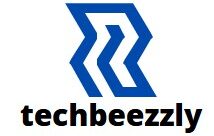
Implementing a new system in your organization means that you are ready to face all the challenges that come with the process. Employee scheduling software is proven to one of the most beneficial tools that you can invest in, however, knowing when and how to make it a part of your brand is a must. If you want to avoid the most common pitfalls not only during implementation but also long after, you’ve come to the right place. Here, we are going to give you some tips on how to use these tools and how to avoid many major challenges.
1. How to get the biggest benefits?
Successfully integrating employee scheduling software into your business starts with a strategic approach. It’s not just about selecting a platform like Buddy Punch; it’s about understanding how it aligns with your company’s specific needs and workflows. This means considering factors like the size of your workforce, the complexity of your scheduling needs, and how the software will interact with your existing systems.
2. Make sure you train your staff before implementation
A common pitfall in implementing new software is the lack of proper training and staff buy-in. Platforms such as Shiftboard are most effective when all users, from management to frontline staff, are comfortable and proficient in using them. Providing comprehensive training sessions and emphasizing the benefits to workers – like easier shift swapping and transparency in scheduling – can foster a positive attitude towards the new system.
3. Maintain the system if you don’t want unpleasant surprises
Like any software, employee scheduling systems such as When I Work need regular updates and maintenance to function optimally. Neglecting this aspect can lead to glitches, outdated features, or compatibility issues. It’s crucial to stay on top of software updates and to regularly check in with your provider for any new features or improvements that could benefit your business.
4. Choose a flexible tool that can adapt to your system
Adaptability is key when using scheduling software. Organizations change, and so do their scheduling needs. Platforms like Homebase offer flexibility, but it’s up to the business to regularly assess whether the scheduling processes are still aligned with their evolving needs. This might mean adjusting shift patterns, incorporating new roles into the system, or reevaluating workforce distribution.
5. Automation is not always going to be your friend
While automation is one of the major perks of employee scheduling software, over-reliance on it can be a pitfall. Software like Deputy provides excellent automated scheduling features, but these should be used as a tool to assist, not replace, human decision-making. Managers should regularly review and adjust automated schedules to ensure they meet the unique needs of each day or week.
6. Ensure you know how to create a synergy between the old and new systems
Finally, integration with other business systems is essential for maximizing the effectiveness of your scheduling software. Platforms like Buddy Punch often offer integration capabilities with payroll, HR, and other systems. Ensuring these integrations are set up correctly and functioning smoothly can save time, reduce errors, and streamline your business operations.
Navigating the implementation and ongoing use of employee scheduling software requires strategic planning, comprehensive training, regular maintenance, flexibility, balanced automation, and seamless integration with other systems. By following these tips, brands can avoid common pitfalls and fully harness the benefits of their scheduling software, leading to more efficient operations, happier staff, and improved bottom-line results.
